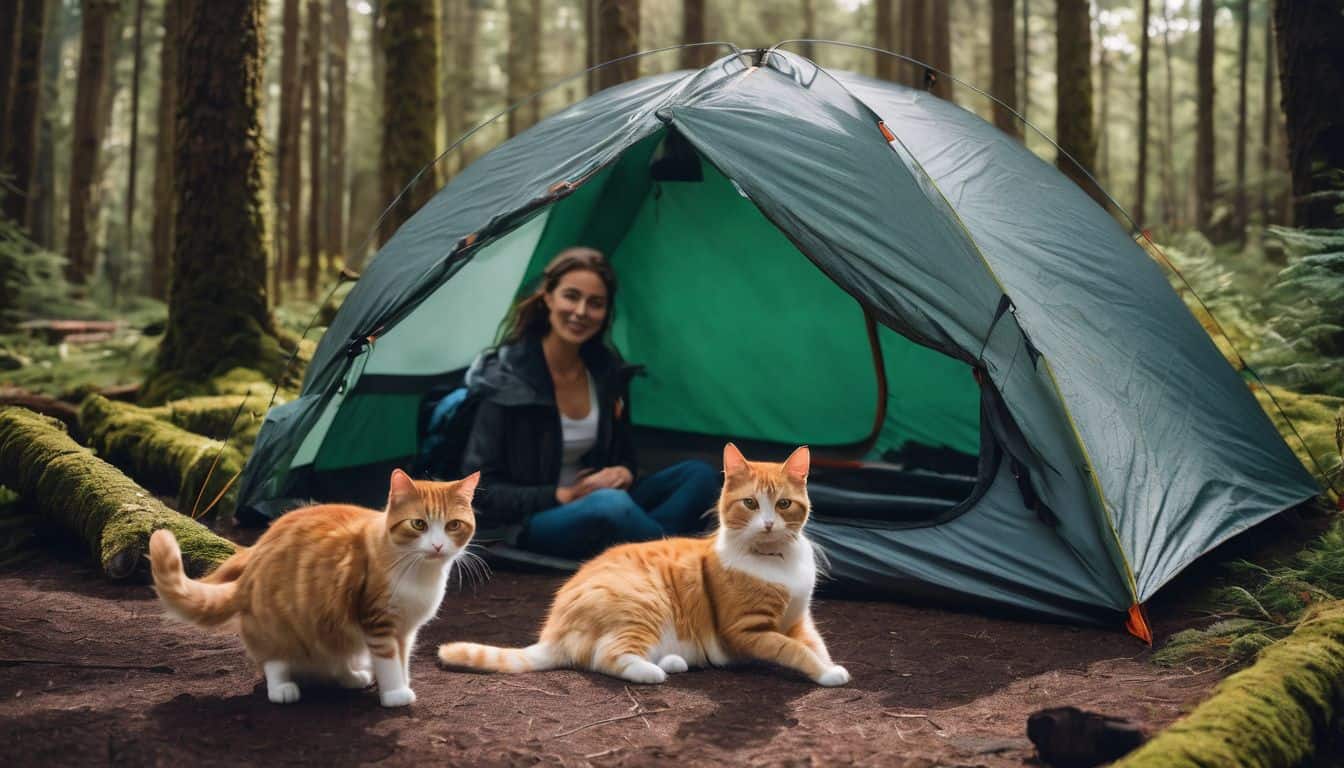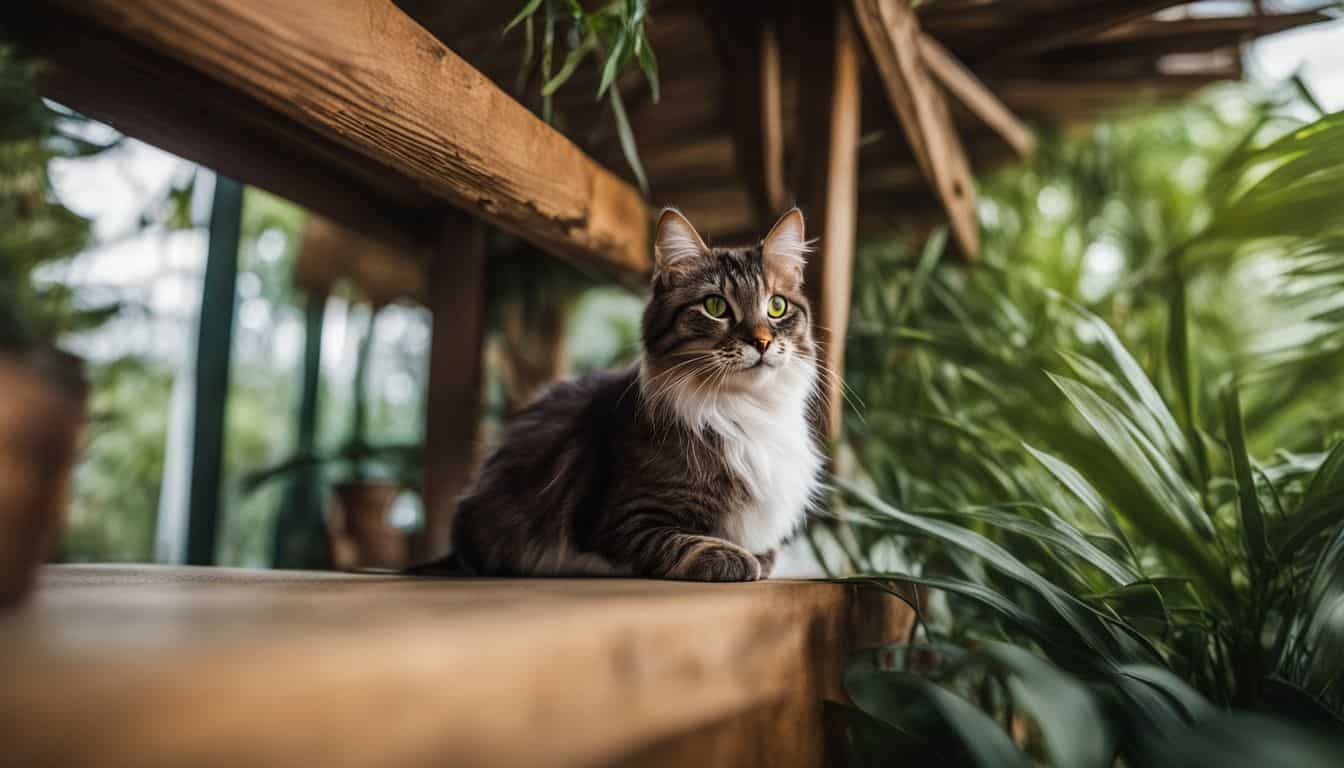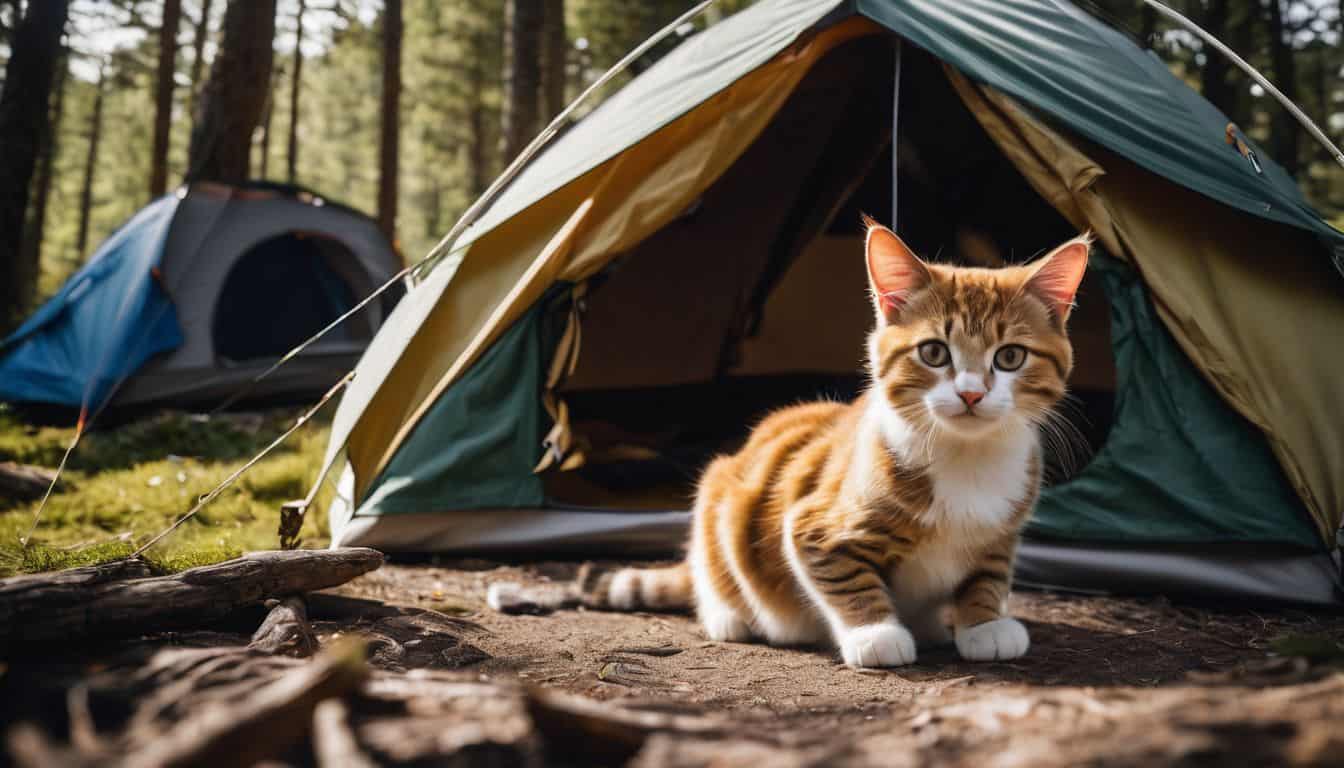Camping with cats can be a rewarding experience, offering a unique way to bond with your feline friend in the great outdoors. However, it’s crucial to keep your cat engaged and entertained in this new environment. This guide will provide you with strategies to ensure your cat stays happy and stimulated during your camping trip.
Create a Safe Outdoor Space
Keeping your cat safe outdoors is paramount when camping. Use a portable cat enclosure or “catio” to allow supervised outdoor time. These enclosures provide a secure space for your cat to experience nature without the risk of wandering off or encountering wildlife.
Alternatively, set up a long leash system tied to a secure point, allowing exploration within limits. This gives your cat some freedom to roam while ensuring they stay close to your campsite. A cat backpack can also be useful for safe observation of surroundings during short walks or hikes.

Provide Familiar Comforts
To help your cat feel at ease in the new environment, bring their favorite toys from home. Pack a familiar blanket or bed to create a sense of security within your tent or camping area. Setting up a scratching post or pad can also provide a familiar outlet for your cat’s natural behaviors. These familiar items can significantly reduce stress and make the camping experience more enjoyable for your feline friend.
Interactive Play Sessions
Engage your cat in regular play sessions to keep them active and entertained. Bring wand toys for interactive play, which can be especially fun in the open spaces of a campsite. Laser pointers can be great for stimulating chase games, but be cautious not to shine them in your cat’s eyes. Get creative by making DIY toys from natural materials found at the campsite, such as dangling a leaf on a string. Always supervise your cat during play with these items to ensure safety.
Sensory Enrichment
The camping environment offers a wealth of new sensory experiences for your cat. Allow supervised sniffing and exploration of new scents around the campsite. Bring catnip or silvervine for occasional stimulation, which can be especially enjoyable in the fresh outdoor air. Create texture experiences by allowing your cat to interact with different natural surfaces like leaves or pine cones (under close supervision to prevent ingestion).
Puzzle Feeders and Treats
Make mealtime more engaging by using puzzle feeders. These can keep your cat occupied and mentally stimulated. Hide cat-safe treats around your campsite (in secure areas) for your cat to “hunt,” tapping into their natural foraging instincts. Bring a variety of cat-safe camping-themed treats to add excitement to your cat’s dining experience.
Observation Points
Cats love to observe their surroundings from elevated positions. Set up a raised platform or perch in a safe area of your campsite for your cat to watch wildlife and camp activities. If you’re camping in a vehicle, a window-mounted cat bed can provide a perfect vantage point for safe wildlife watching.
Routine Maintenance
Stick to your cat’s regular feeding and play schedules as much as possible. This consistency can help reduce anxiety and provide a sense of normalcy in the new environment. Ensure you provide a litter box in a quiet, accessible location within your tent or camping setup.
Mental Stimulation
Engage your cat’s mind with training sessions. Teach simple tricks or commands using positive reinforcement. Clicker training can be a fun and rewarding activity for both you and your cat, helping to strengthen your bond while providing mental stimulation.

Quiet Time Activities
Camping can be exciting but also overwhelming for cats. Provide opportunities for quiet time by bringing a few favorite quiet toys, such as small stuffed animals. Create a cozy “den” in your tent where your cat can retreat for napping and relaxation when they need a break from the stimulation of the outdoors.
Safety Considerations
Always prioritize your cat’s safety during your camping trip. Supervise your cat during all outdoor time, even in enclosed spaces. Ensure your cat wears a collar with ID tags and is microchipped in case of escape. Bring a first-aid kit specifically designed for cats to handle any minor injuries or health issues that may arise. For additional safety tips, especially around campfires, check out our guide on cats and campfire safety tips.
Remember, every cat is different, so pay attention to what your cat enjoys most and tailor activities accordingly. If your cat shows signs of anxiety, refer to our guide on dealing with cat anxiety while camping for additional tips.
Conclusion
By providing a mix of familiar comforts and new experiences, you can keep your cat entertained and content throughout your camping adventure. Always prioritize safety and be prepared to adjust your plans based on your cat’s comfort level. With proper planning and attention to your cat’s needs, camping can become an enjoyable experience for both you and your feline companion.

Leave a Reply